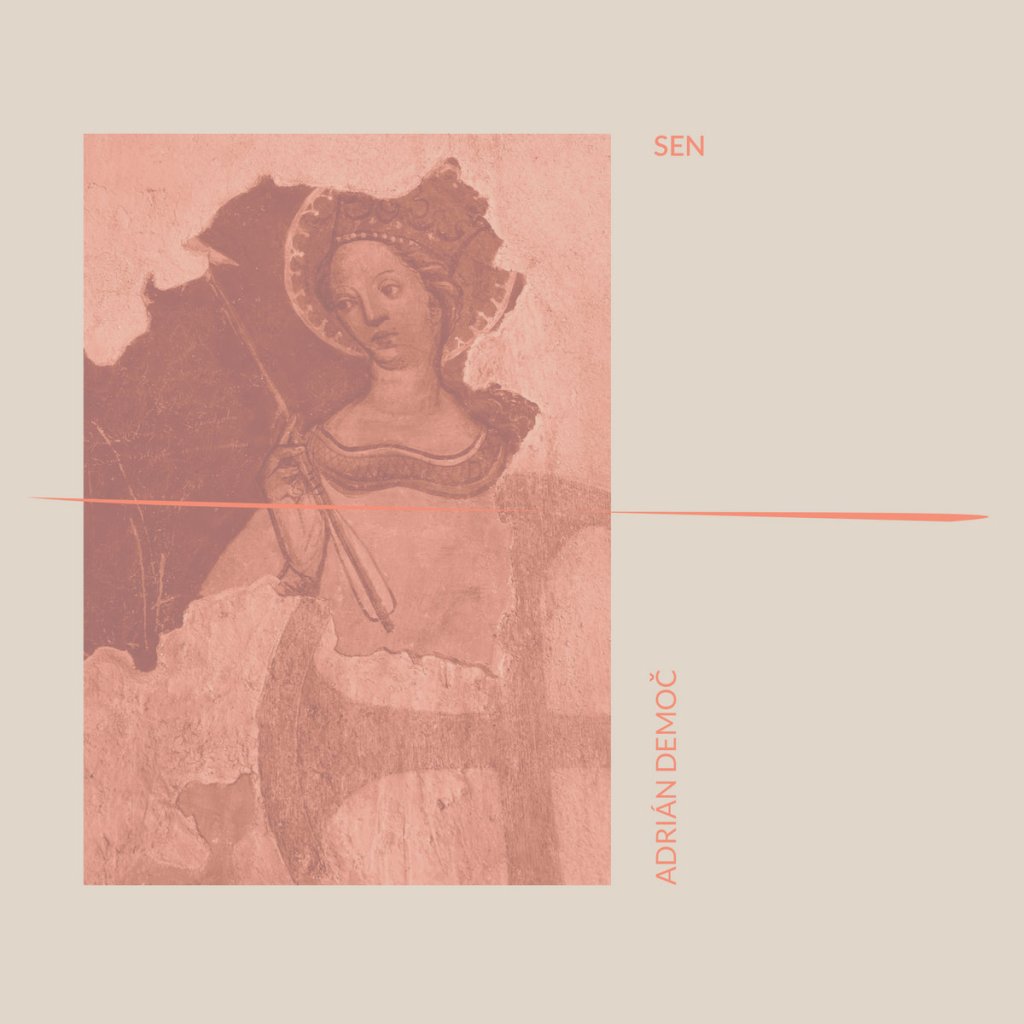Discreet Editions, 2021
contemporary classical, reductionism

(ENGLISH TEXT BELOW)
Tutto ciò che ci rappresenta l’antichità, ogni singola testimonianza visiva precedente all’età contemporanea è a noi pervenuta come un fermo immagine: una pittura rupestre, un affresco, un codice miniato o un bozzetto – superfici immote nelle quali è racchiuso il sapere che, evolvendosi nei secoli, ci ha condotti sino all’oggi. Ma pur sapendo che la storia del mondo non mai ha avuto alcunché di statico, è proprio così che continuo a figurarmi le innumerevoli discendenze che simbolicamente popolano quei documenti, un’umanità come cristallizzata in un tempo prima del Tempo. In queste stesse rappresentazioni sembra regnare, se non un silenzio compìto e sacrale, un’armonia aurea, imperturbabile, precedente a qualsiasi stilizzazione individuale; una musica ancora attinente alle Muse, rievocata con rigore e sensibilità dall’illuminato compositore slovacco Adrián Demoč.
Natura morta e armonia (“Zátišie a súzvu”) sarebbe stato un titolo decisamente adatto all’intera raccolta di questi brani in première discografica per Discreet Editions, composti o rivisitati nell’arco dello stesso 2021: tre analoghe declinazioni di una stasi arcaica, geometrie elementari delineate in un orizzonte espressivo apollineo, al confine incerto tra l’imperfezione umana e l’assoluto divino.
Una dimensione sonora che sembra poter tornare a vivere solo attraverso gli strumenti a essa riferibili, cordofoni e aerofoni che tracciano un ipotetico solco dal cuore dell’Europa al Medio Oriente sino al Mediterraneo. Una volta cancellata dalla forma estetica ogni chiara ascendenza geografica e culturale, i timbri di arpa gotica, viola da gamba e guiterne, parente del liuto, possono alfine richiamarsi tra loro in un’apparente mimesi fra tonalità simmetriche (“Sen”, sogno) o complementari (i tenui controcanti di “A Luca Marenzio”, dedicata all’illustre madrigalista del Rinascimento italiano).
Mossa per impulso di un atavico tintinnabuli, quella di Demoč – già edito dalla prestigiosa Another Timbre – è una musica che occorre anzitutto immaginare e contemplare, prima di poterla trascrivere su carta: una visione chimerica, eppure straordinariamente lucida, della materia sonora che le antiche mura di chiese e palazzi nobiliari avrebbero potuto assorbire e preservare segretamente, per poi di nuovo manifestarsi in guisa di presenze serafiche senza volto, sagome i cui colori splendenti possiamo ancora sentir vibrare sotto la polvere del tempo.
Zátišie a súzvuk (2021)
for mute cornett, viola da gamba, organ, gittern, lute and gothic harp
Sen (2021)
for gittern, lute and gothic harp
A Luca Marenzio (2018, rev. 2021)
for mute cornett, viola da gamba and organ
Line-up: Jedediah Allen, mute cornett; Anna-Kaisa Meklin, viola da gamba; Lukas Frank, organ; Julia Marty, gittern; Rui Stähelin, plectrum lute; Carolin Margraf, gothic harp

Everything that represents to us antiquity, every single visual testimony prior to the contemporary age has come down to us as a freeze frame: a cave painting, a fresco, an illuminated manuscript or a sketch – motionless surfaces in which is enclosed the knowledge that, evolving over the centuries, has led us to now. But even knowing that in the world’s history nothing has ever been static, this is precisely how I continue to imagine the innumerable lineages that symbolically populate those documents, a humanity as if crystallized in a time before Time. In these same representations, if not a mannerly and sacred silence, seems to reign a golden, imperturbable harmony, preceding any individual stylization; a music still pertaining to the Muses, evoked with rigor and sensitivity by the enlightened Slovak composer Adrián Demoč.
Still life and harmony (“Zátišie a súzvu”) would have been a decidedly suitable title for the entire collection of these pieces in premiere recording for Discreet Editions, composed or revised in the same 2021: three similar declinations of an archaic stasis, elementary geometries outlined in an Apollonian expressive horizon, on the uncertain border between human imperfection and divine absoluteness.
A sound dimension that seems able to come back to life only through the instruments related to it, chordophones and aerophones that trace a hypothetical furrow from the heart of Europe to the Middle East and on to the Mediterranean. Once any clear geographical and cultural ancestry has been erased from the aesthetic form, the timbres of gothic harp, viola da gamba and gittern, a relative of the lute, may ultimately recall each other in an apparent mimesis between pitches, be them symmetrical (“Sen”, dream) or complementary (the tenuous contrechant of “A Luca Marenzio”, dedicated to the illustrious madrigalist of the Italian Renaissance).
Moved under the impulse of an atavistic tintinnabuli, that of Demoč – already published by the prestigious Another Timbre – is a music that has first to be imagined and contemplated, before being able to transcribe it on paper: a chimerical yet extraordinarily lucid vision of the sound matter that the ancient walls of churches and noble palaces could have secretly absorbed and preserved, to then again manifest itself in the guise of faceless, seraphic presences, silhouettes whose brilliant colors we can still feel vibrating beneath the dust of time.
